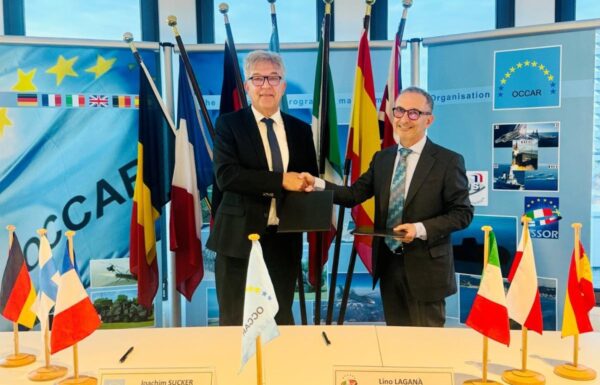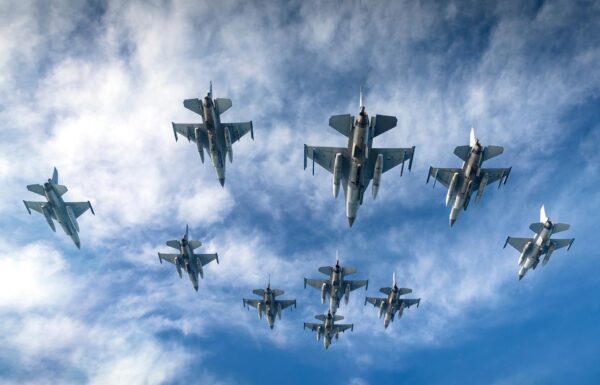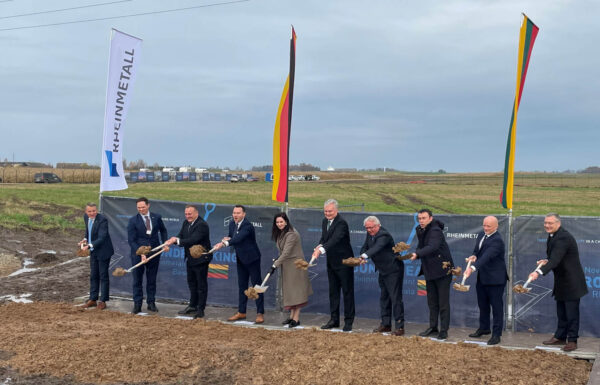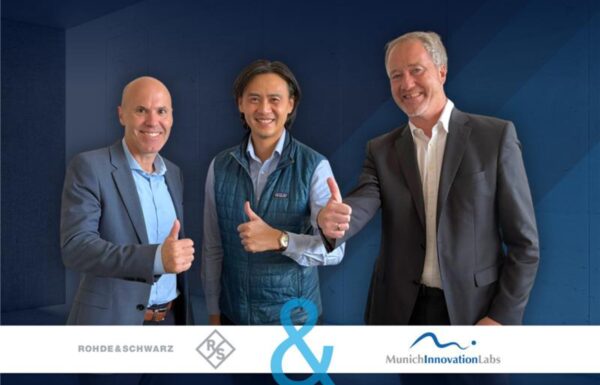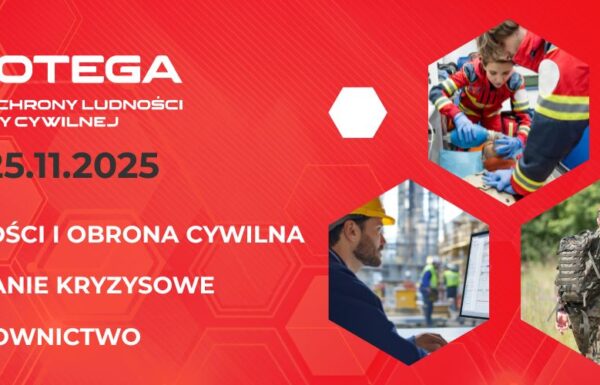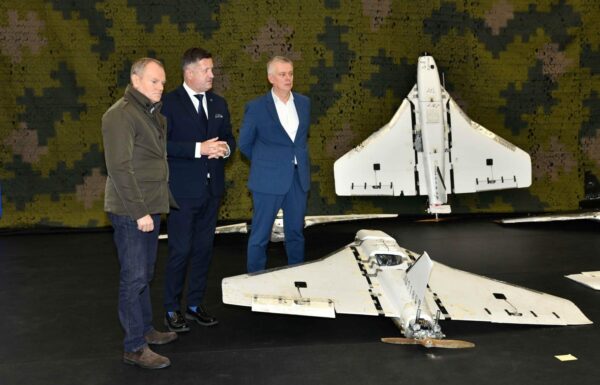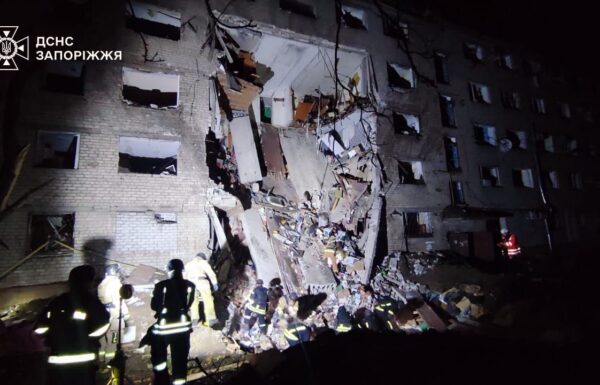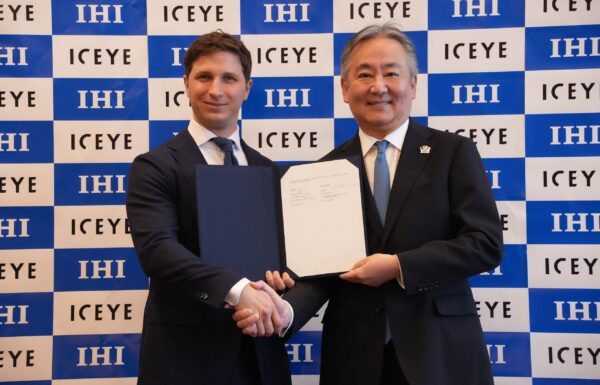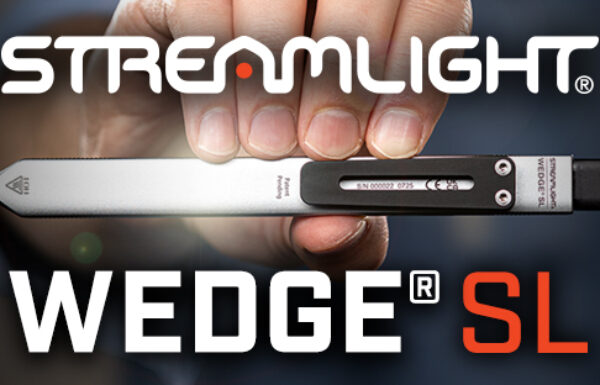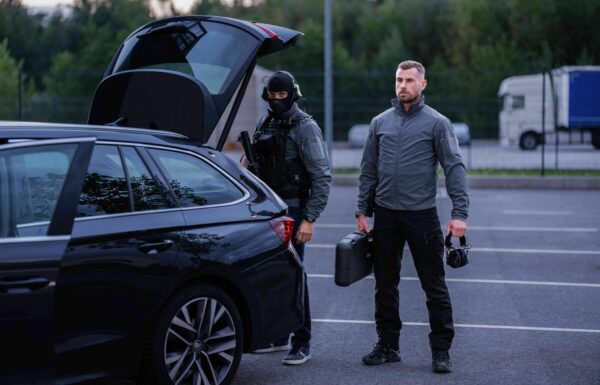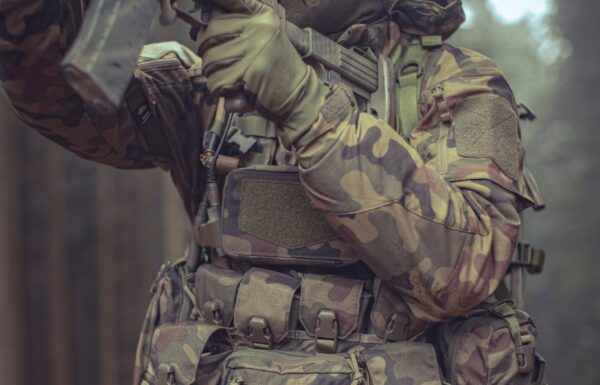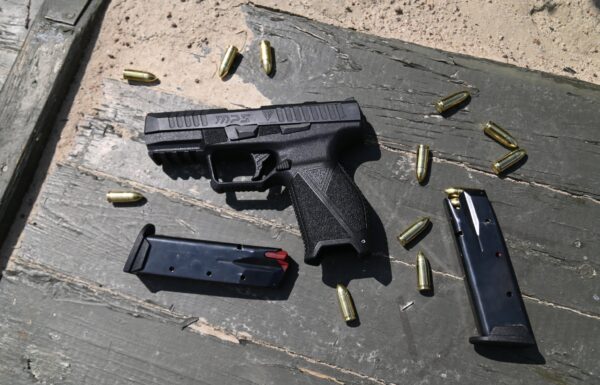On June 23, 2025, just after 1:00 PM in Gdańsk, the official opening ceremony of the Canadian combat helmet factory by Galvion took place at the 7R City Flex Airport Gdańsk site in Gdańsk Matarnia (The Ambassador of Canada to Poland inaugurated Galvion’s European Production Hub).
 At the center, Tomasz Wrotniak, Director of Galvion’s Gdańsk branch, among the officials invited to the factory’s opening ceremony in Gdańsk / Photos: Dariusz Borkowski, MILMAG
At the center, Tomasz Wrotniak, Director of Galvion’s Gdańsk branch, among the officials invited to the factory’s opening ceremony in Gdańsk / Photos: Dariusz Borkowski, MILMAG
After several speeches by Canadian and Polish dignitaries, including Jonathan Blanshay, founder and CEO of Galvion; Mieczysław Struk, Marshal of the Pomeranian Voivodeship; the Deputy Mayor of Gdańsk; and Ms. Catherine Godin, Ambassador of Canada to Poland, together with invited guests, among whom I was present with my editorial colleague Paweł Ścibiorek, we attended the official opening (for the media and the public) of the production, storage, and maintenance (service) facility specializing in the assembly of ballistic head protection under the brand name Caiman (Galvion will supply Hellbender FE ballistic helmets to the FBI).
 PDxT Helmet for US Marine Corps
PDxT Helmet for US Marine Corps
For those interested in the construction of protective gear, this was a real treat, especially considering that there are currently only two companies in Poland seriously involved in this segment of individual protective equipment focused on head protection. These are the domestic companies PSO Maskpol from Konieczki and Galvion, which have been producing in Poland since April this year. Before the official opening, guests had the opportunity to explore Galvion’s current product range in the warehouse and production hall, specifically in the distribution and loading area, which is offered to various markets and is manufactured not only in Gdańsk. Different helmet models were presented both on live models, men and women dressed in the uniforms of countries that use Galvion helmets, and at a specially arranged exhibition booth displaying helmet models currently in production. Following the speeches and a brief moment for photojournalists, we were able, after the official ribbon-cutting ceremony, to tour the facility in small guided groups (Galvion’s European Production Hub in Poland is now fully operational).
 Caiman in its latest variant with the CORTEX system
Caiman in its latest variant with the CORTEX system
The production hall is a building constructed using a lightweight steel framework, resembling many similar large-area facilities located along highways near major cities. It features a flat or slightly sloped roof designed to drain rainwater. The facility’s interior is divided into eight distinct zones, if I recall correctly, including what appeared to be three enclosed areas due to paint fumes. A high-bay warehouse occupies the largest section. Other areas include a hanging line for helmet shells before and after painting, paint shops, a quality control and inspection station for painted shells, and an assembly section with workstations arranged back-to-back. The end of the production line is marked by the packing area and the loading/distribution zone, which, during the opening ceremony, was filled with guests and the exhibition. The guide walked us through the various stations, spending the most time discussing the paint shop section of the hall.
 Cobra Plus of the British Army
Cobra Plus of the British Army
The production process at Galvion’s Gdańsk facility is based on finishing raw helmet shells brought in from factories in the USA and the UK. These shells already have trimmed edges and pre-drilled holes for the front mounting bracket and side accessory rails. The operations carried out in the designated work areas include the whole painting process, technological preparation of the shell involving cleaning, roughening, painting, lacquering, and so on, until the shell is fully ready for the assembly of components. This process begins with gluing on the edge trim, followed by the installation of internal padding, and concludes with the attachment of the front mounting bracket. All tasks in Gdańsk are performed manually, including the application of the lacquer coating. The internal components are delivered together with the shells in their original packaging. One might assume a modern assembly line would rely on robots and automation, but here it’s traditional handcraft, based on the sharp eyes and skilled hands of both men and women. At the quality control station, of course, there was a lady whose keen eye didn’t let any painting or finishing imperfection slip by.
 Caiman of the Polish Special Forces
Caiman of the Polish Special Forces
Galvion’s warehouse and production hall in Gdańsk covers an area of 3,716.12 square meters (this is the official figure I received), or 40,000 square feet, making it the company’s second-largest production facility after the plant in Portsmouth, New Hampshire, USA, and ahead of the facility in Montreal, Canada. Other Galvion locations include Vermont and Massachusetts in the USA, as well as Bristol in the United Kingdom.
Next to this building is another structure of similar design, intended generally for office staff, and equipped with the necessary social facilities for the 60–70 employees using the site. If it weren’t for the prominent Galvion symbols and logos above the building entrances, one could easily walk past without knowing what’s inside. Our visit focused solely on one hall, the one where helmet assembly, servicing, and storage take place.
 Canadian Caiman with skeletal side rails
Canadian Caiman with skeletal side rails
The size of the facility, mainly its usable floor space, makes it capable of producing up to 108,000 helmets annually at the current staffing level. This number can increase significantly as demand and orders grow. The daily output of the Gdańsk team is approximately 450 units. Is 100,000 helmets per year a lot or a little? The Bulgarian company MARS Armor, a producer of individual ballistic protection, can manufacture 100,000 combat helmets in a single year. Readers can judge for themselves how this compares to Galvion’s Gdańsk operation.
During the factory tour, it was hard not to notice that Galvion’s current production is designated for two national customers: Finland and Sweden. The racks holding raw or already painted shells were labeled with flags indicating the destination countries. These shells, made from UHMWPE, become Caiman ballistic helmets once finished. According to information provided during the visit, the shells shipped from the U.S. and assembled by the Gdańsk team will go to users in Sweden, while the shells produced in the UK by NP Aerospace will be delivered to users in Finland. The helmet units seen on the racks for Sweden and Finland are likely part of a contract for 80,000 Caiman helmets ordered jointly by Norway, Sweden, and Finland. The agreement was signed in November 2023, with an 18-month fulfillment period. MM magazine had previously reported on the close cooperation between the British company NP Aerospace and Galvion in the field of helmet production. It’s worth noting that the British have stepped back from producing their own helmet models in favor of selling the underlying technology to other manufacturers. They now focus on producing shells on behalf of clients like Galvion. As a result of this shift, NP Aerospace helmets, specifically the AC 914 and AC 915 models, are now produced and distributed exclusively by USI, a company owned by Point Blank Enterprises since 2017, under the names Rogue Combat Helmet (RCH) and Special Ops Rogue (SOR). These models were previously manufactured and distributed solely by NP Aerospace. Currently, NP Aerospace is also fulfilling contracts, including its first since 2015, for the delivery of 9,000 Cobra Plus helmets to the British Army under the Virtus program.
 Caiman of the Polish Special Forces
Caiman of the Polish Special Forces
Galvion’s Cobra models, designated M/12, were previously used by the Danish Army. Currently, the Danes have expanded their use and operate four different helmet models from Galvion, all designated as M/20. These include: the basic M/20 helmet (a mass-dimensional dummy without ballistic protection), the fully ballistic operational M/20 helmet, the ballistic High Cut Caiman M/20 helmet, and the Carbon High Cut M/20 helmet—which can be fitted with additional ballistic covers to achieve ballistic protection, which the carbon helmet alone does not offer. The Danish helmet procurement has been carried out in two phases since 2023. It began with an order for PDxT-type helmets, both operational and basic models, and was later expanded to include the ballistic Caiman model and the Carbon Caiman helmet.
An interesting fact: the Carbon Caiman model is no longer in production due to limited user interest.
 Static display of helmets produced by Galvion. Helmet descriptions provided in the text
Static display of helmets produced by Galvion. Helmet descriptions provided in the text
During the official opening of the Gdańsk facility, six helmet models were presented on live models dressed in the uniforms of their respective users: the Batlskin PDxT helmet from the U.S. Marine Corps Integrated Helmet System, introduced in 2021; the latest Batlskin Caiman helmet with the CORTEX system, introduced in 2025; the British Army’s Cobra helmet, introduced in 2015/2016; the Caiman helmet used by the Polish Special Forces, introduced in 2024; the Canadian Army’s Caiman helmet, introduced in 2023; and another Caiman helmet for the Polish Special Forces, also introduced in 2024—six different models worn by walking presenters.
At the static display, the following could be seen: the PDxT helmet of the Israeli Army; the Viper P2 in the HC variant; the Viper P6N of the Dutch Army; the operational PDxT helmet from Denmark; the Viper A5 in the FC version with a mandible guard; the Caiman TL helmet with a mandible guard; the Caiman TL helmet contracted by NATO under the NSPA program with accessories; the Viper P2 of the German Army; and the PDxT helmet of the USMC. In total, nine combat helmet models. In addition to the helmets mounted on mannequin heads, the booth also featured Galvion’s Mission Adaptive Charging Station (MAX-8) in a suitcase-style configuration, complete with accessories. This system allows charging from multiple power sources such as AC power, solar panels, and car batteries. It is capable of supplying power to a wide range of popular military batteries. The complete unit weighs 10.3 kg. On a side mannequin, visitors could also see a tactical vest equipped with the Nerv Centr Power & Data System, used by forces such as the US Marines. After the factory opening ceremony and a tour of the production hall, guests were invited to enjoy refreshments prepared to conclude the day.
 Mission Adaptive Charging Station (MAX-8) with accessories. On the right, a tactical vest equipped with the Nerv Centr Power & Data System
Mission Adaptive Charging Station (MAX-8) with accessories. On the right, a tactical vest equipped with the Nerv Centr Power & Data System
It was worth traveling from one end of Poland to the other. It was worth seeing the facility and at least part of the production process of combat helmets. It was worth attending such a ceremony; there likely won’t be another opportunity under similar circumstances.
With that, I would like to sincerely thank Galvion for the invitation and the opportunity to attend the official opening of the production facility in Gdańsk among the guests, and for fulfilling one of my editorial dreams.


